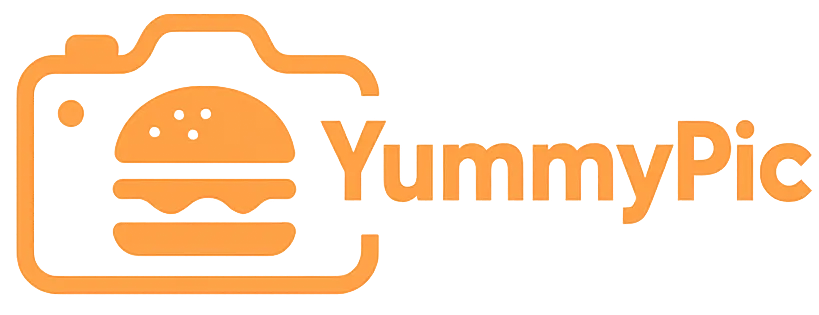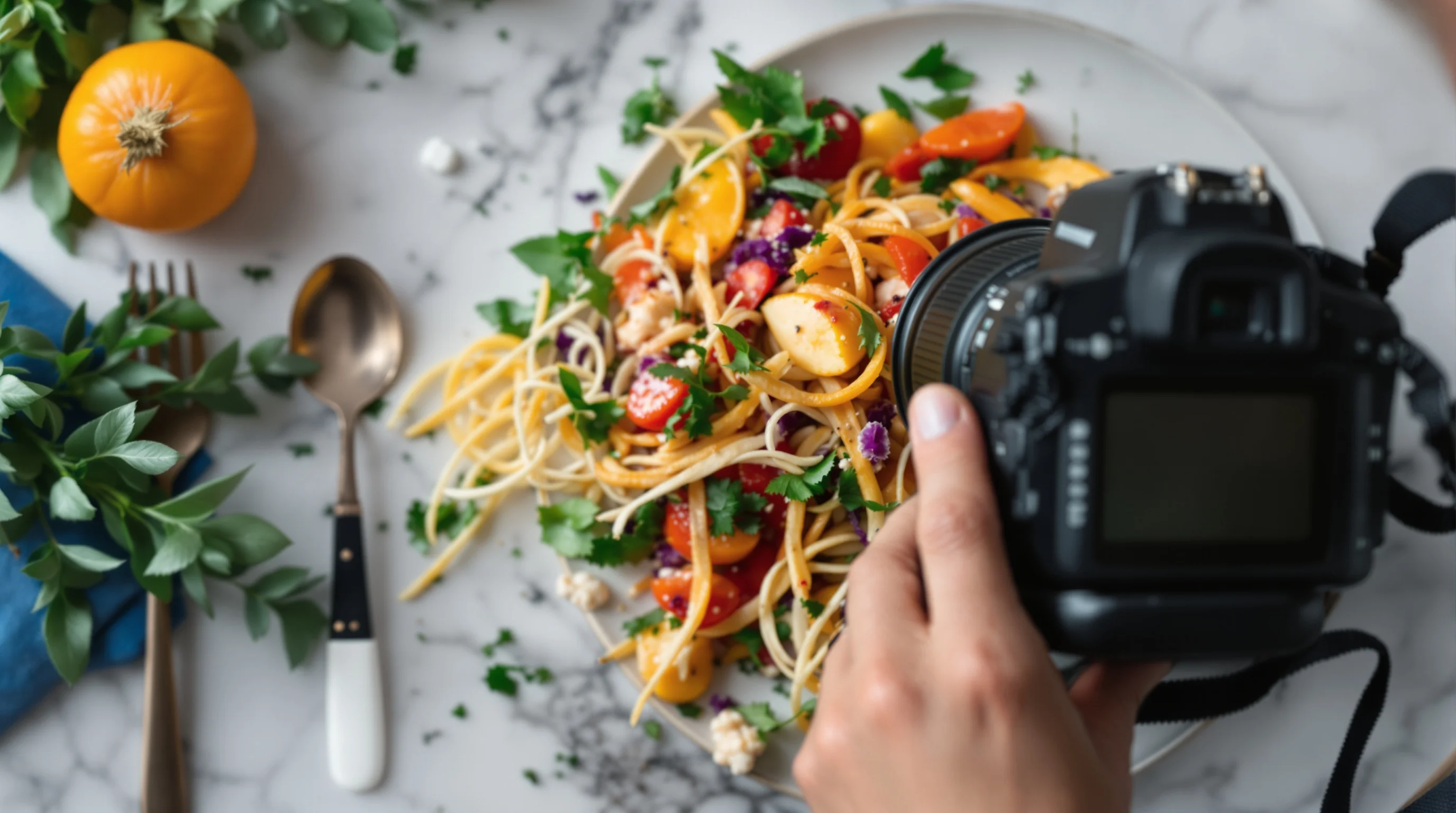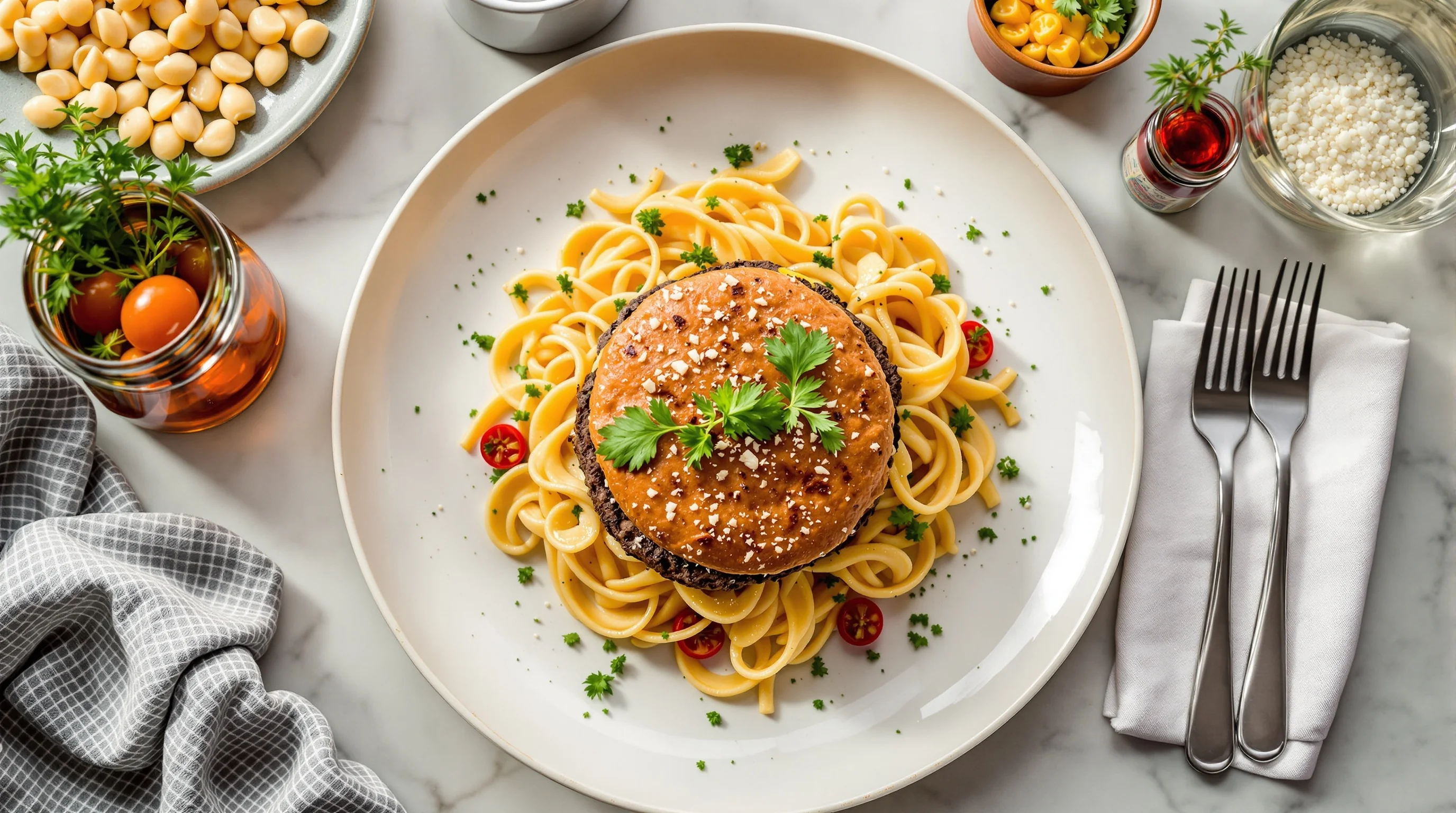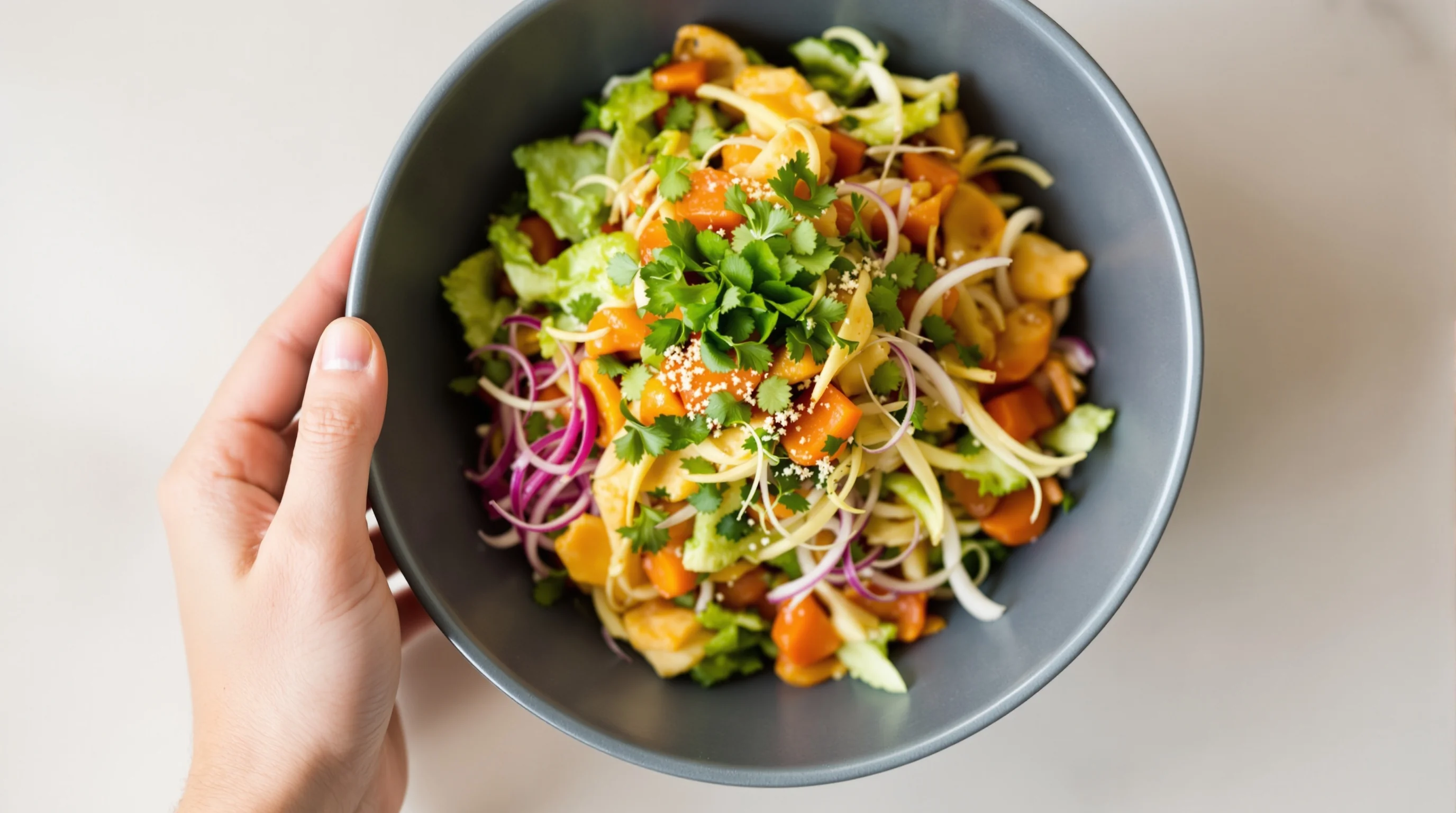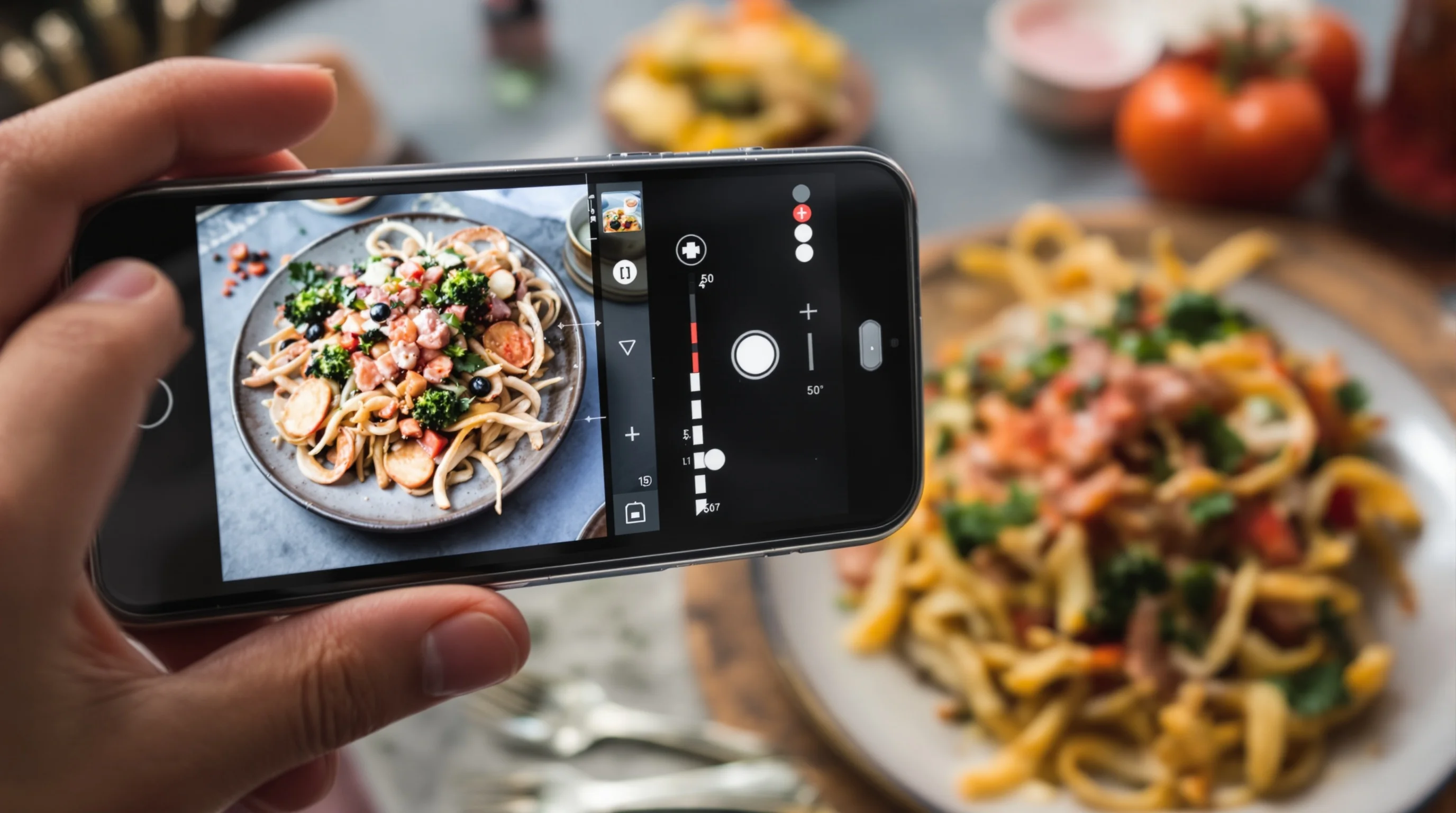Introduction — If you’ve ever wondered what lens for food photography will make your menu images sing, you’re not alone. Restaurant owners, cafe managers and food creators repeatedly ask which focal length and lens type work best for flat-lays, overhead shots, tight close-ups and moody 45° compositions. Choosing the wrong lens can introduce distortion, kill background compression or force you into awkward working distances. This guide explains the practical trade-offs between focal length, aperture and lens type (prime vs zoom), covers full-frame and crop-sensor differences, and gives budget and smartphone-friendly options so you can make smart purchases or use YummyPic’s AI tools to preview results quickly.
Why lens choice matters for food photography
Lens choice affects perspective, compression, distortion and depth of field — all critical for appetizing food photos. The common industry advice is to start with a 50mm on full-frame (or roughly 35mm on APS-C) because anything wider can distort food at close distances, as noted by Shotkit. A fast wide-aperture lens helps create a creamy shallow depth of field and performs better in low-light restaurants, another point emphasized by Shotkit. On the flip side, mid-telephoto lenses (about 50–90mm full-frame) give pleasing compression and keep backgrounds clean, which is why many pros prefer that range.
If you’re deciding what lens for food photography across a menu, think of three common shot types: overhead flat-lays, 45° plated shots, and tight macro details. Two Loves Studio recommends a 50mm for flat-lays and a 100–105mm macro for 45° shots, while many pros add a versatile 24–70mm f/2.8 zoom to cover both extremes, as Joanie Simon explains. We’ll unpack each option below with practical tips and budget alternatives.
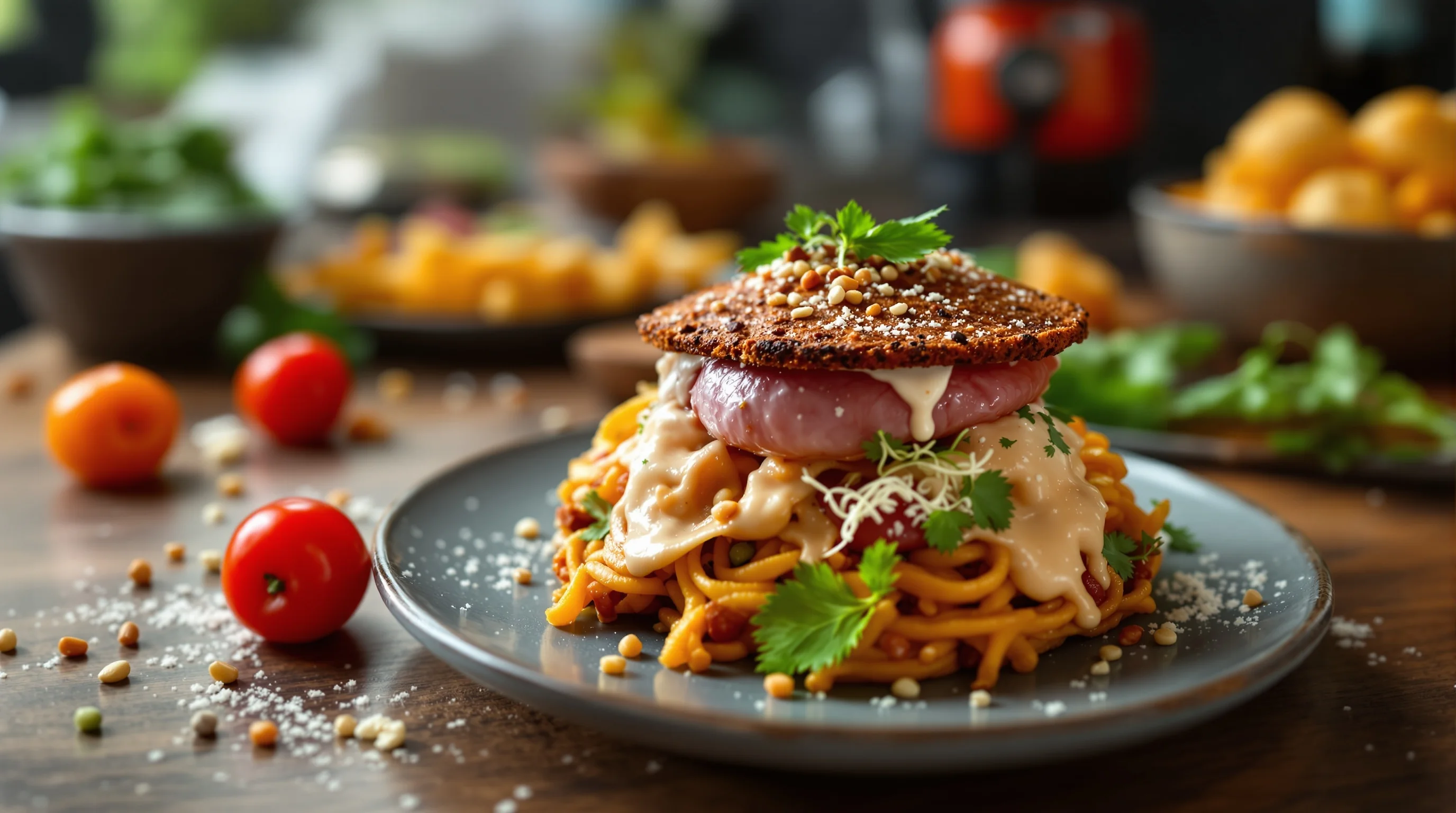
What is the best lens for food photography?
There’s no single answer to what lens for food photography is “best”; it depends on the shot. For full-frame cameras, a 50mm is the classic all-rounder for flat-lays and general menu work. For tight 45° shots with strong background separation and no distortion, a 100–105mm macro or short telephoto is often preferred. If you need one lens that covers a wide range of restaurant scenarios, a 24–70mm f/2.8 zoom is a professional favorite because it covers wide overheads to tighter details with consistent sharpness, as noted by Two Loves Studio and Joanie Simon.
“The top 2 lenses for food photography and full-frame cameras are 50mm ... for flatlays and overhead shots [and] 100/105mm macro for 45-degree shots,”
Two Loves Studio
Joanie Simon notes the versatility of a 24–70mm f/2.8: it covers '24mm for a wider angle overhead shot to ... 70mm for tighter detail shots' in a single lens.
Joanie Simon
Practically: if you can afford two lenses, pair a 50mm (flat-lays) with a 100/105mm macro (45° and detail). If budget or mobility matters, a 24–70mm f/2.8 or a 24–105mm f/4 gives flexibility. For smartphone shooters or kit-lens owners, we’ll address specific smart recommendations later in this guide.
Flat-lays and overheads — which focal length works?
Flat-lays and overhead shots benefit from a normal to short wide focal length with minimal distortion. On full-frame, a 50mm is ideal because it sits in the sweet spot between perspective and working distance. On APS-C or Micro Four Thirds, choose ~35mm (APS-C) or ~25–30mm (MFT) to match the effective field of view. Shotkit and Two Loves Studio both recommend 50mm on full-frame specifically to avoid edge distortion at close distances.
If you need a wider field (large tables, kitchen scenes), a 24–35mm range works — but be careful: anything wider increases the risk of skewed plates and stretched cutlery at close distances. For more on composition, see our food photography composition rule of thirds — Practical Guide.
Close-ups and macro — do you need a macro lens?
Macro lenses are specialized for 1:1 or near-1:1 reproduction, delivering crystal detail — great for texture, glazes and garnish shots. If you want crisp droplets, flaky salt or bread crumb texture, a 100–105mm macro on full-frame is difficult to beat. Macro also keeps you at a comfortable distance so you don’t cast shadows or tip plates. That said, many short telephoto primes (85mm) or even some zooms can create pleasing close-ups if extreme magnification isn’t required.
Answering the question 'Do I need a macro lens for food photography?': not always. If your work demands fine detail for packaging or hero images, yes. For general menu photography, a quality 50–85mm prime or a 24–70mm can be sufficient and more versatile.
Prime vs zoom: sharpness, speed and flexibility
When weighing prime vs zoom for food photography, remember the classic trade-off: primes usually provide better sharpness and wider maximum apertures for shallow depth of field, while zooms offer convenience and framing speed. A 50mm f/1.8 or f/1.4 prime gives excellent low-light performance and dreamy bokeh; however, shooting wide-open on food can reduce critical areas of the plate out of focus. Many pros use primes when they want ultimate separation and zooms when they need to move quickly between overheads and detail shots.
- Prime: sharper, wider apertures, lighter weight — great for controlled shoots and low light.
- Zoom: flexible framing, fewer lens changes — ideal for busy restaurants or single-lens shoots.
- Macro: necessary for extreme close-up detail and texture.
If you’re uncertain which to buy, rent a 50mm and a 100mm macro or try a 24–70mm f/2.8 for a month — YummyPic’s rent-and-try recommendations and curated lens kits can simplify that decision with honest reviews and results-based advice.
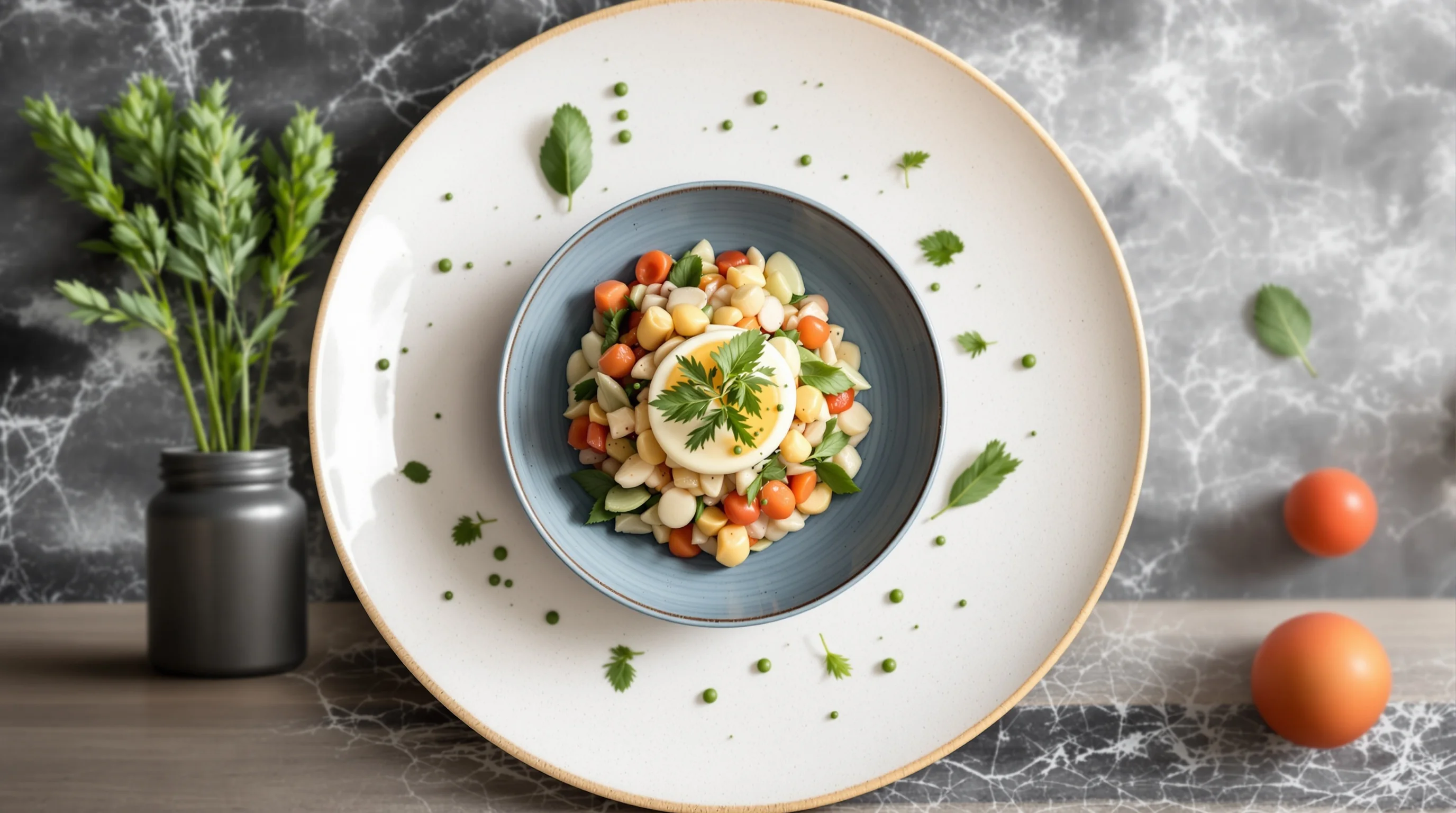
Sensors, effective focal length and distortion
Sensor size changes the effective field of view. A 50mm on full-frame behaves like a 35mm on APS-C — so when asking what lens for food photography, multiply by your crop factor. On APS-C, choose ~35mm for flat-lays to mimic 50mm FF behavior. Remember that wider lenses can cause barrel distortion at close distances which makes plates look rounded or stretched; this is why many guides advise avoiding very wide focal lengths for close food shots (Shotkit, Two Loves Studio).
Mid-telephoto focal lengths (50–90mm full-frame equivalent) are widely considered the best range for stunning food photos because they provide pleasing compression and minimal background clutter, giving images a professional look without distortion. Keep this in mind when buying lenses for different cameras.
Practical shooting tips and budget alternatives
If budget or complexity is a pain point, you can still get great results. A budget 50mm f/1.8 prime is inexpensive and sharp — an excellent starter lens. Many kit zooms (18–55mm) can produce solid overheads at their mid-range focal lengths; stop down to f/4–f/5.6 for more depth-of-field and edge-to-edge sharpness. Smartphone shooters can use clip-on macro lenses or the built-in portrait mode with careful lighting to mimic shallow depth of field.
Filling a content gap in other guides: practice with sample images. Shoot the same dish with a 35mm, 50mm and 85mm (or the smartphone equivalents), then compare distortion, background separation and how much of the plate fits in frame. This hands-on test removes guesswork and reduces decision paralysis.
Lens recommendations by shot type
Here’s a concise list answering what lens for food photography is best by common shot:
- Flat-lay / Overhead: 50mm (FF) or ~35mm (APS-C). Use tripod for consistent framing.
- 45° Plated shot: 100–105mm macro or 85–100mm short telephoto for compression and distance.
- Close-up detail: 100mm macro or a quality 85mm prime for texture shots.
- Wider restaurant and editorial: 24–35mm on FF (or 16–24mm on crop) but watch distortion.
- All-purpose single lens: 24–70mm f/2.8 (pro) or 24–105mm f/4 (lighter, flexible).
These choices reflect the common industry guidance and cover the key facts from guides like Shotkit and Two Loves Studio while balancing budget and workflow for restaurants and delivery platforms.
Pro tips for aperture, working distance and lighting
Aperture controls depth of field: use wider apertures (f/1.8–f/2.8) for creamy backgrounds and tighter subject isolation, but be cautious — too wide can mean only a sliver of the plate is sharp. For group dishes or bowls, stop down to f/4–f/8 for more of the dish in focus. Maintain comfortable working distances: telephoto lenses allow further distance and natural compression; wide lenses force you closer and may introduce distortion. Always prioritize good lighting — a fast lens helps in dim restaurants, otherwise use controlled continuous lights or reflectors.
💡 Pro Tip
When shooting menu photos for delivery platforms, aim for consistent framing and focal length across dishes so customers can compare sizes and components easily. Use a 50mm for salads and mains and a 100mm macro for desserts and details.
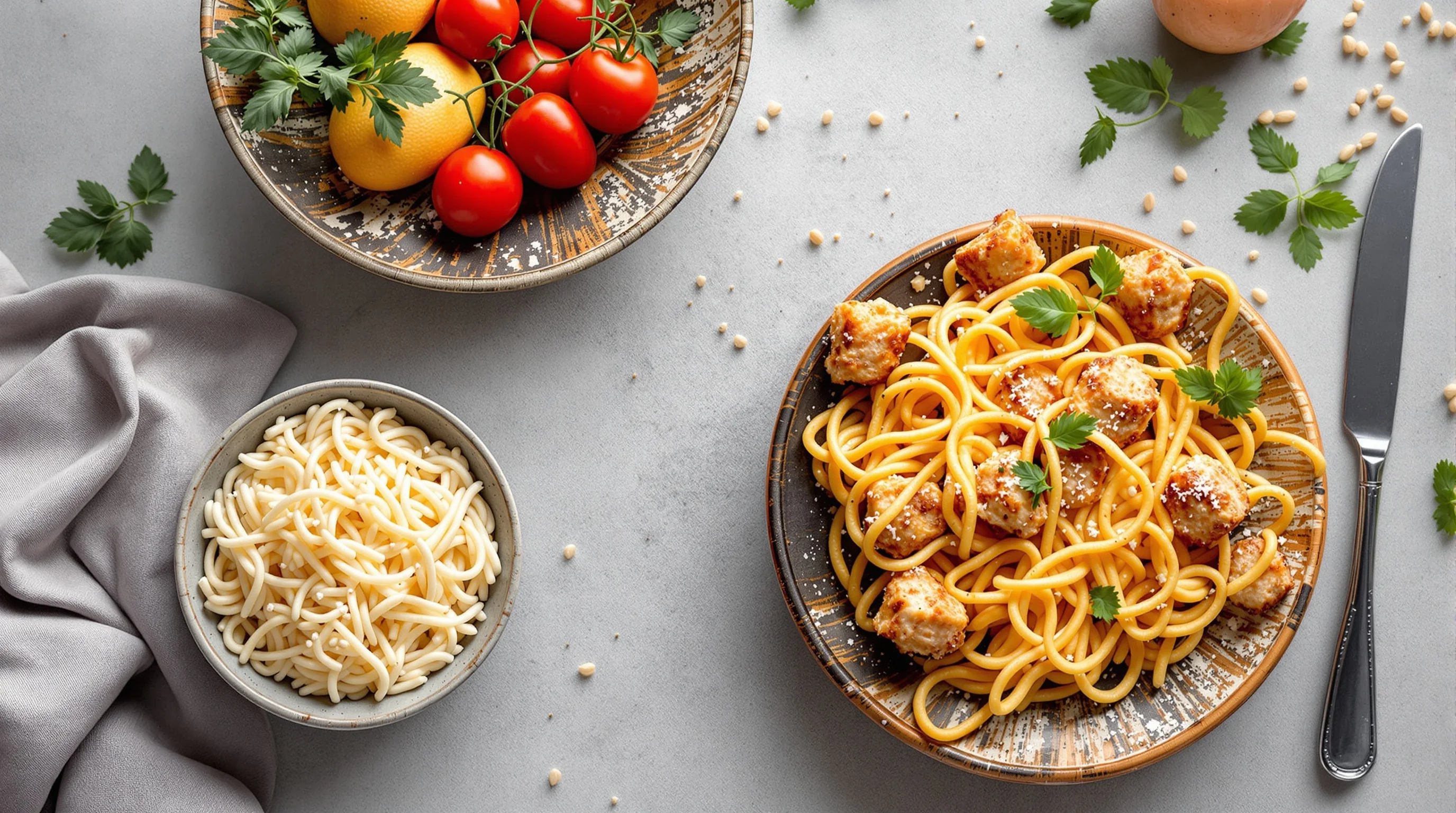
How YummyPic helps restaurants pick the right look
If you’re balancing time, cost and visual consistency, YummyPic offers a fast alternative to buying every lens. YummyPic’s AI-powered platform transforms simple food photos into professional, restaurant-quality images in seconds. Rather than guessing what lens for food photography will work, upload one clean image and preview multiple styles (bright & airy, dark & moody, tight macro crops) without a full shoot. This saves money, reduces the fear of buying expensive gear that may not suit your workflow, and delivers images optimized for DoorDash, Grubhub and Uber Eats.
- Speed: professional photos in seconds without a full shoot
- Cost-effective: fraction of hiring a photographer
- Variety: multiple styles and crops for different platforms
Combine YummyPic with practical lens tests: take baseline photos with a simple kit lens or smartphone, upload them, and compare AI-generated results that mimic 50mm, 85mm or macro looks — that way you can test what focal lengths you actually need before buying expensive glass.
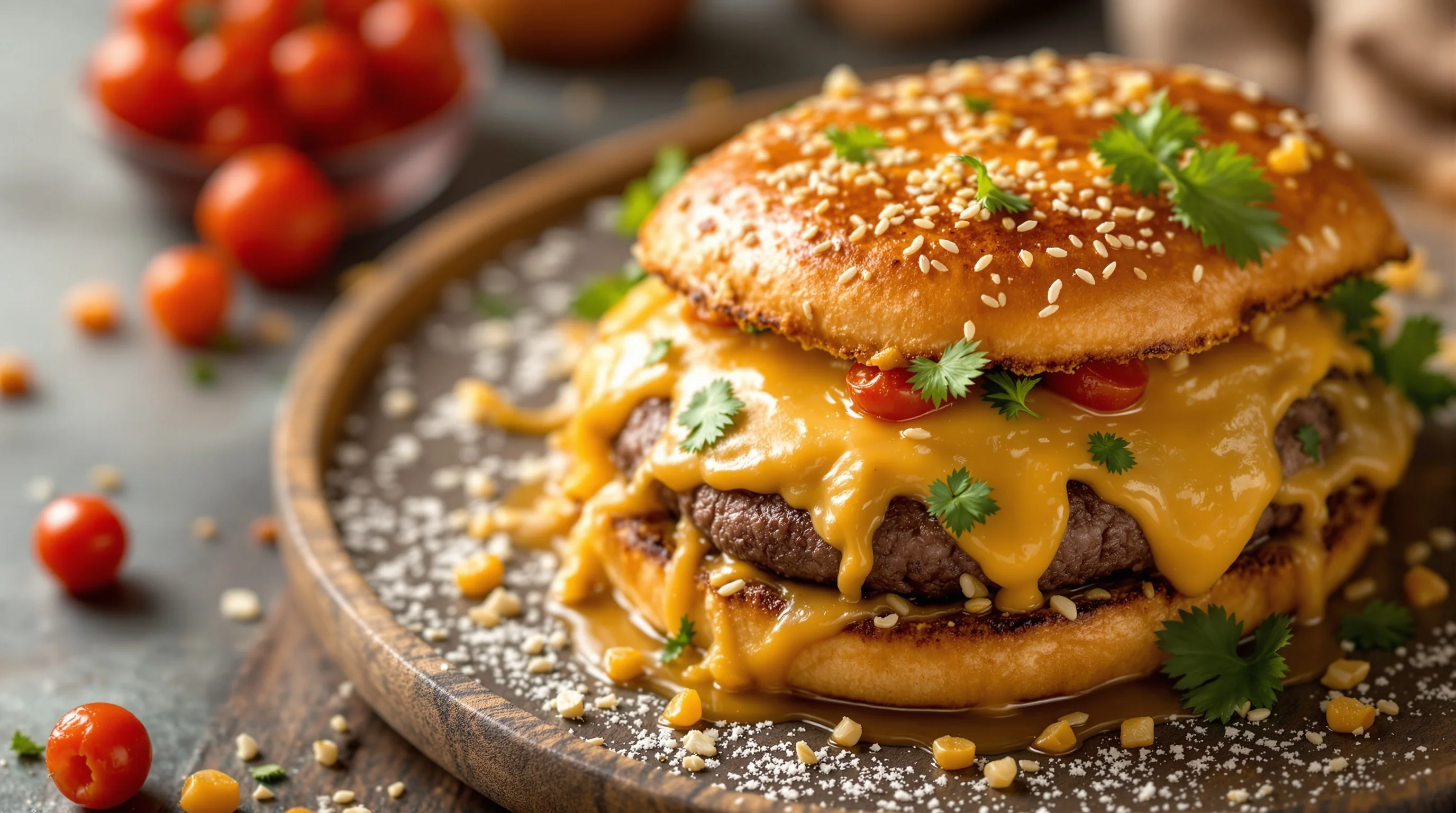
Conclusion
Answering 'what lens for food photography' requires aligning your goals with practical trade-offs. Start with a 50mm on full-frame (or ~35mm on crop) for flat-lays, add a 100–105mm macro or 85–100mm short telephoto for plated 45° and detail shots, and consider a 24–70mm f/2.8 zoom if you need one versatile lens. Budget shooters can begin with a 50mm f/1.8 or use kit zooms with careful aperture control. Remember the key facts from guides like Shotkit and Two Loves Studio: focal length, aperture and sensor size matter. And if cost, time or testing is a barrier, YummyPic’s AI tools let you preview finished images and avoid buying gear you don’t need. Practical testing — shooting the same dish with different lenses — will remove guesswork and improve your menu photography quickly.
